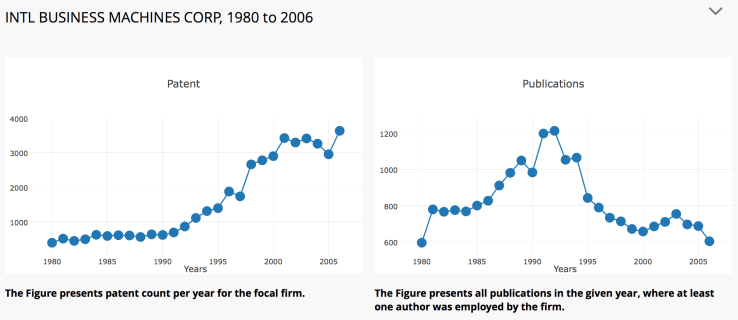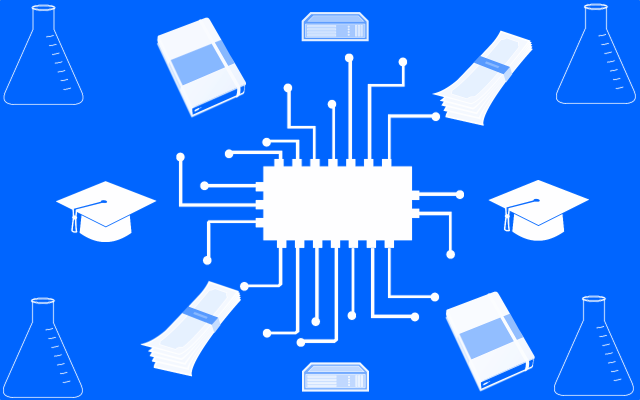If you’ve been following the headlines in the world of AI, you might be fooled into thinking that corporations are doubling down, rather than withdrawing, from pure research. But on the ground, things are considerably more complicated — tech companies are spending more on the development part of R&D while relying more on cash strapped universities to move the needle on research.
The Golden Goose Project, a new data visualization effort from Duke University’s Fuqua School of Business, attempts to highlight this paradigm shift with patent and research output statistics as well as data quantifying how research is applied, both inside companies and in the broader ecosystem.

For example, you can see how IBM’s patent output rose continually while publications involving employees peaked and fell off around 1992.
But while all of this data underscores a decline in corporate research, it doesn’t indicate that corporates are becoming any less innovative. Instead, new pipelines are opening up to facilitate the diffusion of research.
Startups are increasingly acting as vehicles for commercializing research and carrying it into aging corporates. On the aggregate, startups contribute very little research, but they do help make new technologies palatable.
Unfortunately, it increasingly seems like the university backbone of innovation is under siege from political interests. Research is heavily subsidized by the Federal Government. And while private philanthropies like the Gates Foundation and the Chan Zuckerberg Initiative have helped to fill that void, these groups can only do so much.
One fortunate branch of research that has been less impacted is artificial intelligence. Huge research group acquisitions, like Google’s $500 million purchase of Deep Mind, highlight an industry-wide desire to conduct more AI research internally. This thirst has forced corporates to cater to the interests of researchers — separating research groups as much as possible from revenue-centric company interests.
“Everyone has to have the capacity for AI,” Ashish Arora, the Duke Professor spearheading the research, told me in an interview. “Universities haven’t produced enough AI researchers, so companies have to invest internally.”
But while this research has helped companies like Facebook, Microsoft and Google make huge strides in AI, it isn’t a universal formula for corporate innovation. Executives often struggle to draw clear lines between research and development, making it hard to pull off independent and valuable research over the long hall.
One major shortcoming of The Golden Goose Project is that it only takes into account data collected between 1980 until 2006. Hundreds of billions of dollars of market value have been created in that time, limiting the contemporary applicability of the work.
The National Science Foundation has played a key role in backing the data visualization project. Arora told me that he has put in a grant to continue the research and fill in the missing years as soon as possible.
